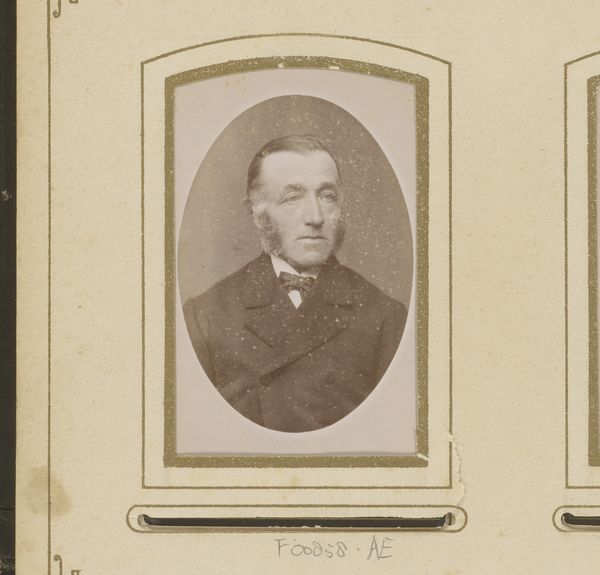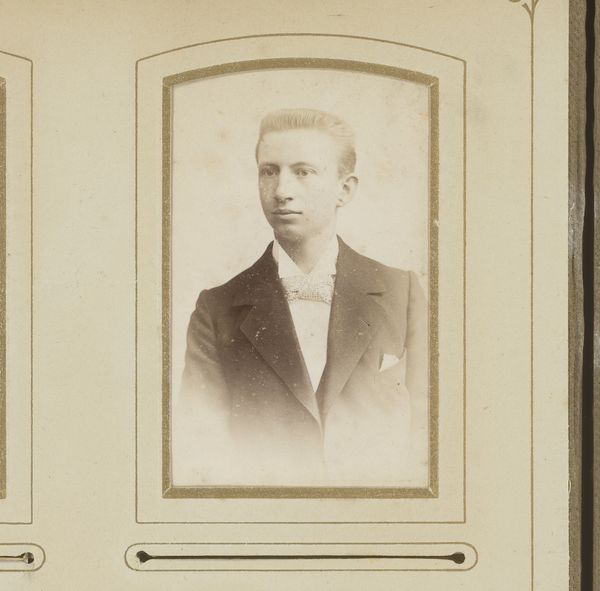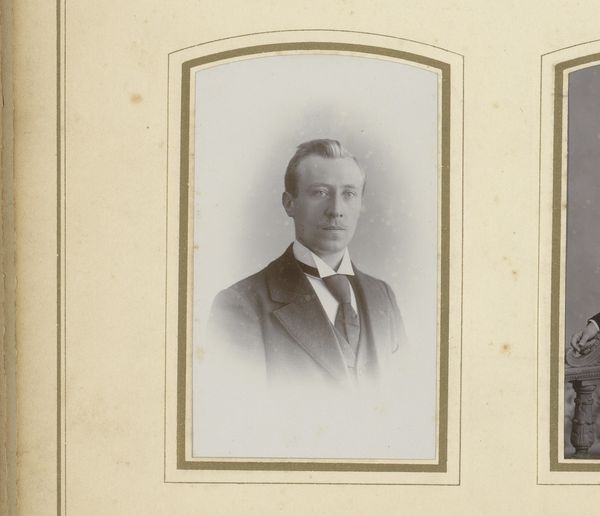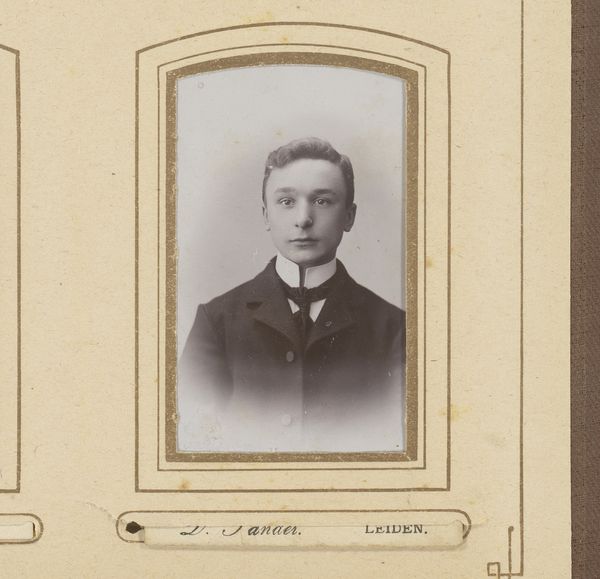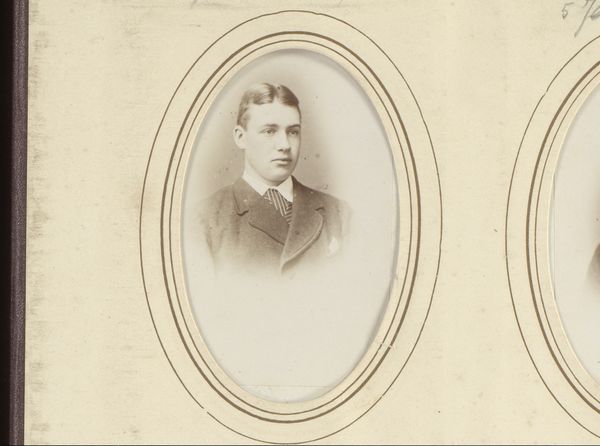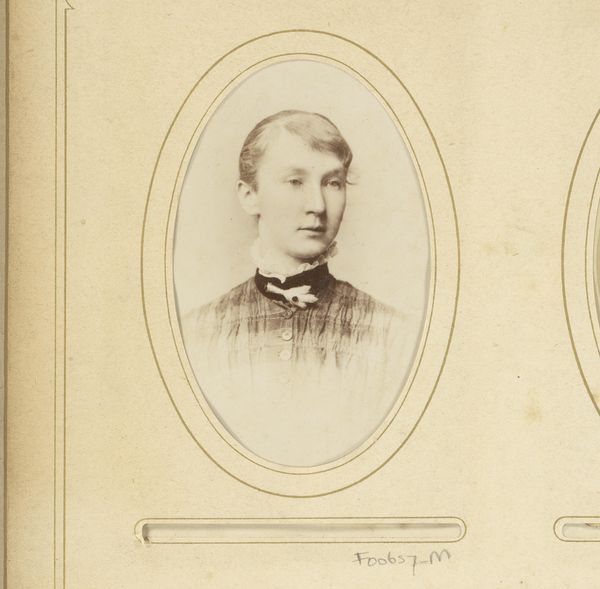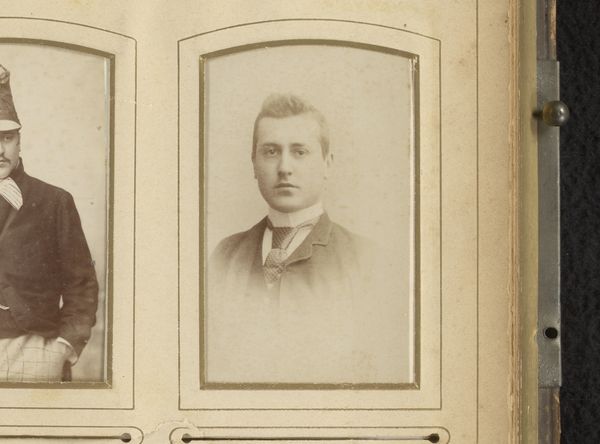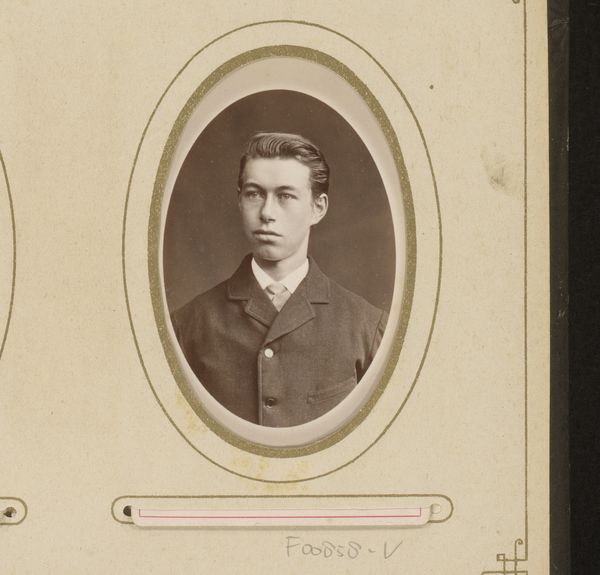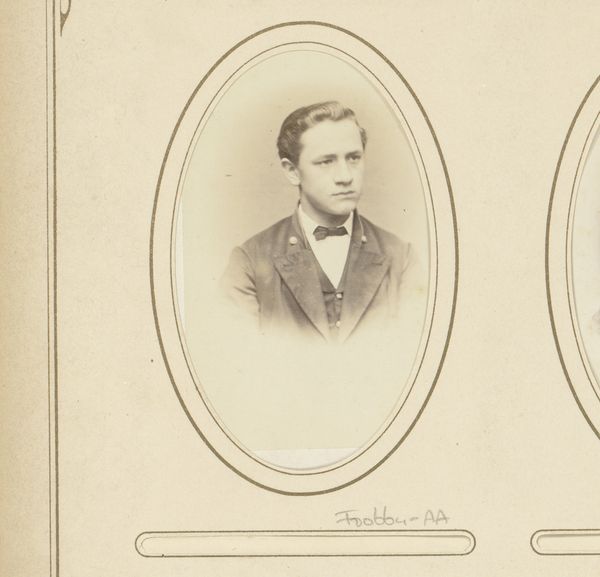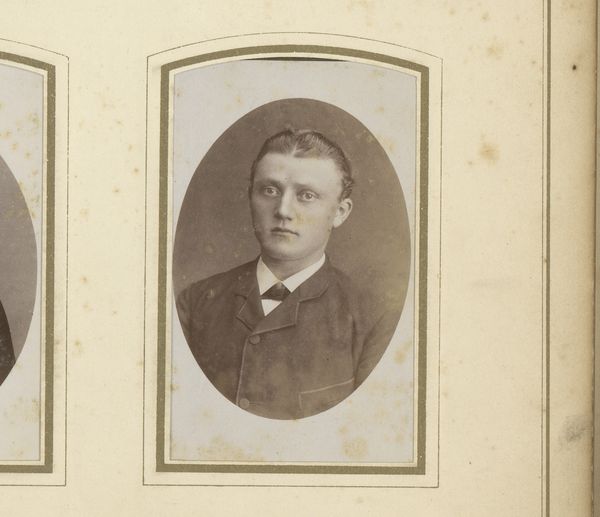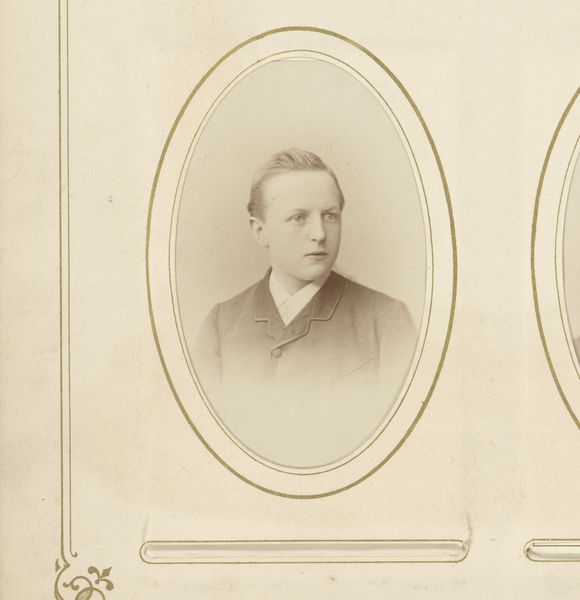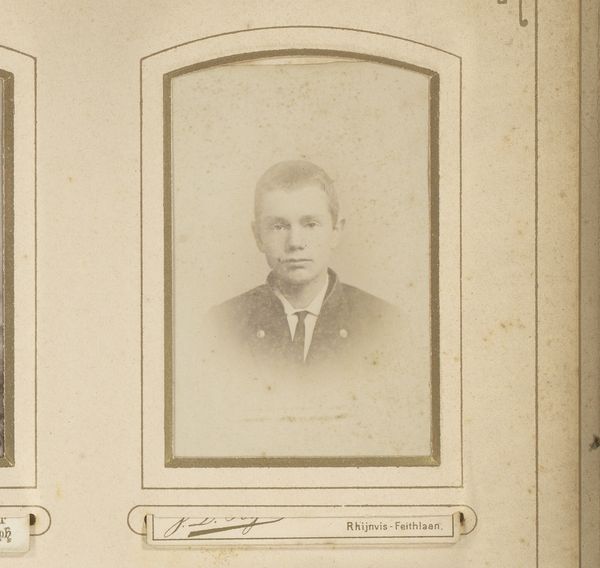
photography, gelatin-silver-print
#
portrait
#
photography
#
historical photography
#
gelatin-silver-print
#
genre-painting
Dimensions: height 81 mm, width 52 mm
Copyright: Rijks Museum: Open Domain
Curator: Here we have a gelatin-silver print titled "Portret van en jonge man," which translates to "Portrait of a Young Man," dating roughly from 1882 to 1940. Editor: The oval frame immediately draws the eye, creating a sense of formality. There's an intriguing contrast between the crisp detail of the subject and the slightly faded tones. Curator: Precisely! The beauty of the gelatin-silver process is its ability to render incredible detail. Consider how photography during this period became democratized, transitioning from the realm of the wealthy to accessible portraiture for the aspiring middle class. Editor: True, but consider also how the monochromatic palette and tight composition strip away the distracting clutter. The meticulous control over light and shadow speaks volumes. Curator: Beyond aesthetics, this photo serves as a powerful cultural document. These types of portraits, often housed in family albums, represented a form of social currency. Editor: Looking at it from the purely aesthetic, the geometric contrast is interesting; the boy’s angular features against the soft curve of his collar and bow-tie. Curator: Right, we see this piece from the collection of Alfred Wragg. As a study in material culture, consider how photography impacted the demand for painted portraits, forcing artists to redefine their craft in the face of a new medium capable of capturing "reality." Editor: Yes, that is true. What is further interesting is this pursuit of aesthetic expression in photography. One might consider the choice of pose, attire, lighting, even in a medium perceived as purely mimetic, all elevate the photographic process to high art. Curator: In sum, this portrait serves as a microcosm of a rapidly changing society where new technologies shaped cultural values, artistic practices, and our perception of the self. Editor: Ultimately, beyond context, it offers an intimate look into an anonymous life suspended in time, mediated by the aesthetic constraints and capabilities of its era.
Comments
No comments
Be the first to comment and join the conversation on the ultimate creative platform.
